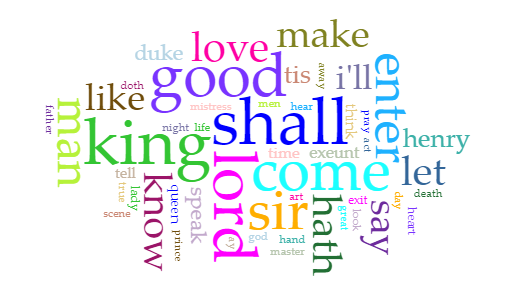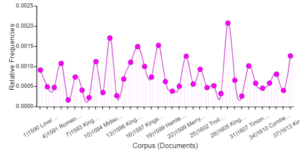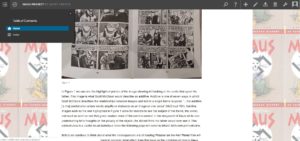The Digital Humanities and Poetry (Part 1)

If you’ve spent any time around humanities departments in 2018 you’ve probably come across the phrase “digital humanities,” and if you’re anything like me, when you first encountered “digital humanities” you didn’t blink an eye. Or maybe “digital humanities” gave you pause and you considered would does digital + humanities mean? Take a few minutes and search humanities departments across the United States and you’ll find from comparative literature to philosophy, history to religion, and everything in between, a concerted interest in the field of digital humanities. Digital humanities can refer to not only certain tools that can enhance traditional research methods, but it can also refer to certain methods, approaches, and sensibilities when it comes to scholarship. Graduate programs in the humanities across the country are offering certificates in digital humanities and you only need to look as close as UCLA to see their development of a digital humanities minor for undergraduates. This is all to say that we’re at a point where a ubiquitous acknowledgment of a new order is upon us in the academy.

The uses of the digital humanities are myriad and the answers it may provide depend on who is asking the question and how they’re asking the question; in other words, a literary critic may be interested in learning something new about Shakespeare’s plays and in order to learn something new that critic wants to conduct a distant reading of all of Shakespeare’s plays as opposed to a close reading. Distant reading programs such as Voyant Tools allow users to see the bigger picture of a writer’s work highlighting things such as word frequency, themes, style, and grammar. By highlighting various aspects of a writer’s corpus, a penetrative mind may be able to tell us something new about the language in which a writer is writing in, or the linguistic interventions that are occurring over time that are not as apparent when distant reading is not marshaled. Critics of digital humanities methods reduce things like distant reading to word and phrase counting, but what these critics fail to understand is that the ends are not means; rather, the means open new ends and ways of understanding. Digital humanities programs are only as powerful and useful as the humanist behind them.
Poets can find many uses in digital humanities methods. For instance, tools such as Scalar can build online digital books that are immersive and multimedia oriented. Scalar is just like a physical book, yet, it can be controlled in ways that force readers down certain paths or allow readers to navigate a book and read any part of it they choose. A poet could create a Scalar book of any number of pages and have those same pages interact with each other. Videos, links, and annotated images can complement and enhance poetry in ways more traditional forms cannot.

The digital presentation format that Scalar provides allows for the juxtaposition of image, video, and text while also giving power to the poet in allowing them to control how, where, and what one reads. A writer’s imagination and creativity can run wild at the intersection of digital humanities and poetry. For an example of what a complete Scalar project can look like, take a look at former Digital Research Studio Fellow Eddie Surman’s Master’s Thesis.
As a Digital Research Studio Fellow for the Mellon Digital Humanities Research Studio at The Claremont Colleges (DH@CC) a part of my job is to work with students, staff, and faculty across the campuses on digital humanities projects and courses. We provide support from conceptualization, to project development and troubleshooting. Through the DH@CC reading group to workshops on digital humanities tools, I’m constantly interrogating the ways in which digital humanities concepts and methods can be expanded and how useful they can be to humanists of all stripes. Poetry, whether it is approached through a critical lens or a creative one, remains a relatively untapped resource in the topography of digital humanities inquiry. Whoever decides to tap that resource with the right digital humanities questions, tools, and methods is in for a wealth of new insights and meanings. Maybe that person is you!
—Jamey Keeton
Share